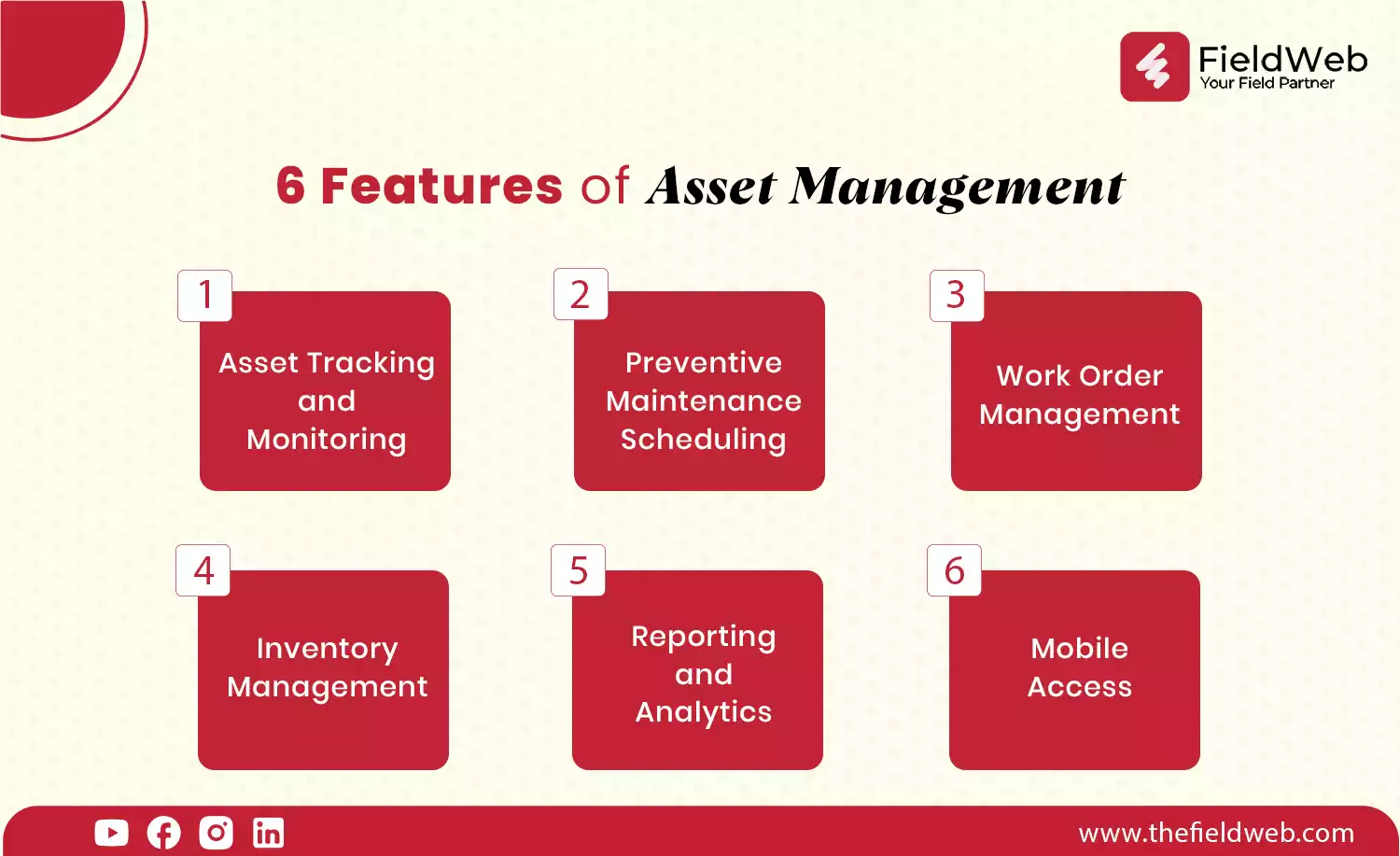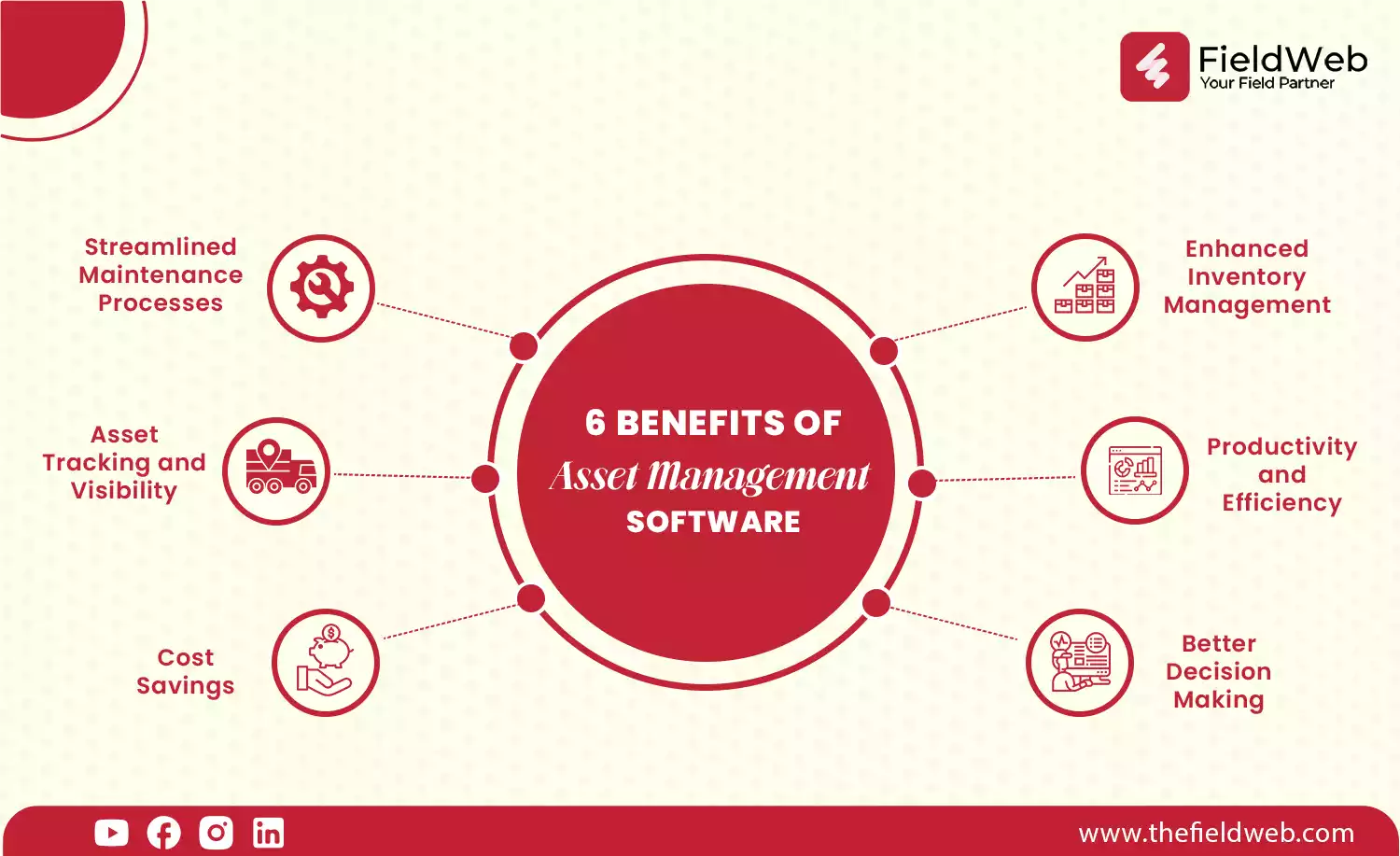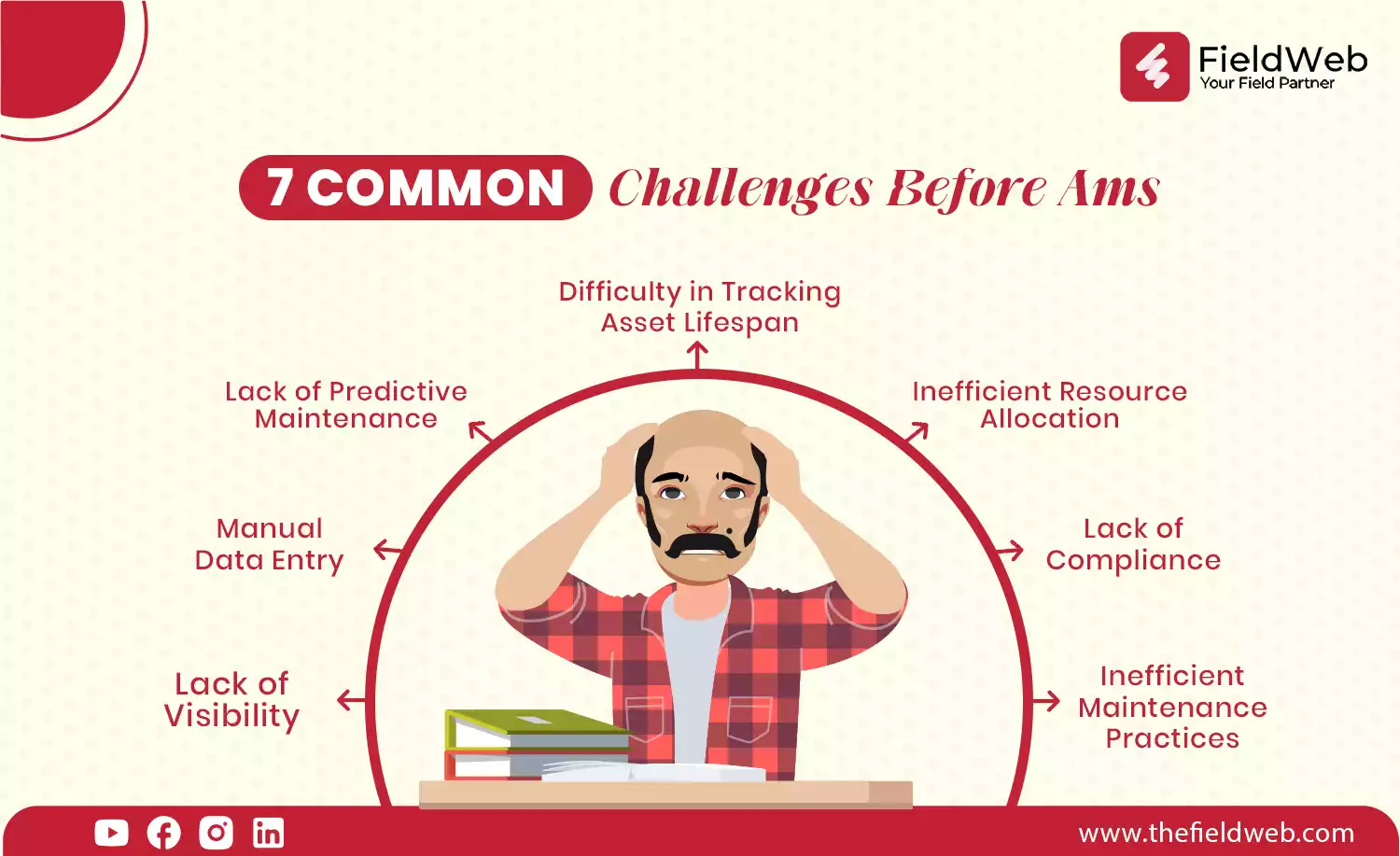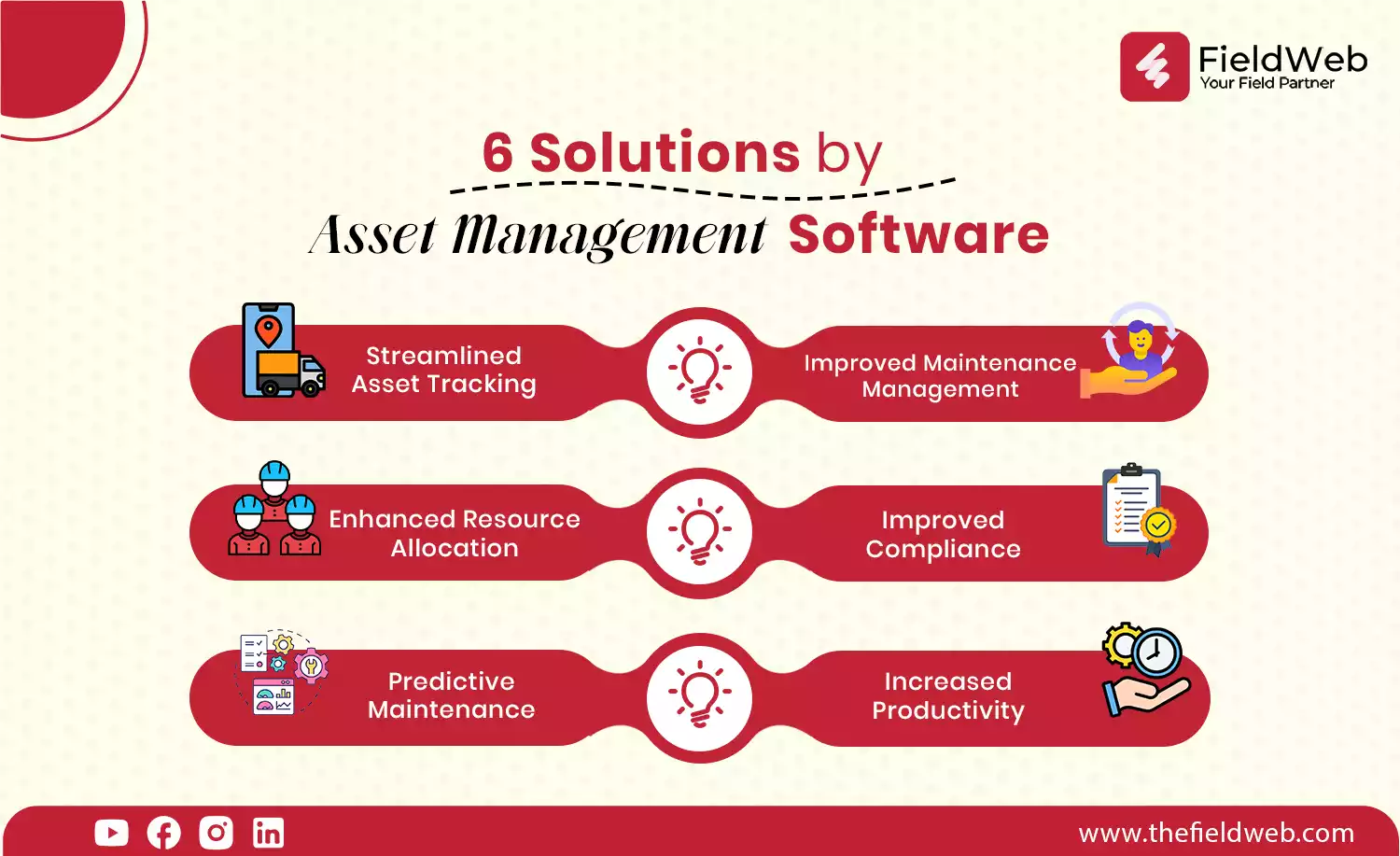
What is Asset Management Software?: The Importance of Asset Management Software
Introduction:
Field service companies rely on efficient asset management to ensure the smooth operation of their operations. Managing assets spread across multiple locations and in various states of repair, on the other hand, can be a complex and difficult task. Field service businesses can face costly downtime and a negative impact on their bottom line if they do not have a comprehensive system in place to track, monitor, and manage assets.
Asset management software has emerged as a powerful tool for field service companies looking to streamline asset management and maximize asset efficiency. Asset management software can help businesses reduce costs, improve business performance, and extend asset lifespan by providing real-time visibility into asset performance, maintenance needs, and utilization.
In this blog post, we'll look at the importance of asset management software for field service businesses, as well as the challenges they face without it, and how asset management software can help them overcome these obstacles. We'll also go over the key performance indicators (KPIs) that businesses should consider when selecting asset management software, as well as look at some of the best asset management software options available, such as FieldWeb FSM.
What is Asset Management?
The process of managing an organization's assets to ensure their optimal utilization, maintenance, and disposal is referred to as asset management. Intangible assets such as patents, trademarks, and copyrights can be considered assets as well as equipment, machinery, vehicles, buildings, and IT infrastructure. Asset management entails tracking, monitoring, and analyzing asset data in order to make informed decisions that maximize asset performance while minimizing costs.
What is the Need for Asset Management Software for Field Service Business?
To provide high-quality service to customers, field service businesses rely on the proper operation of assets. Vehicles, equipment, and tools, for example, must be properly maintained, monitored, and tracked to ensure peak performance and minimise downtime. This is where asset management software comes in, offering a comprehensive solution for managing assets across their entire lifecycle.

- Streamlined Maintenance Processes: Asset management software allows field service companies to schedule preventive maintenance tasks and track repair history, ensuring that assets are properly maintained and performing optimally. Businesses can reduce downtime and the risk of unexpected equipment failures by streamlining maintenance processes, which can impact service delivery and customer satisfaction.
- Improved Asset Tracking and Visibility: Asset management software gives field service businesses real-time visibility into the location, status, and usage of assets, allowing them to track inventory and monitor usage patterns. This enables businesses to make informed asset deployment decisions and ensure that assets are used efficiently and effectively.
- Enhanced Inventory Management: Businesses can use asset management software to track inventory levels and optimize inventory management processes. Businesses can reduce inventory carrying costs and improve order fulfillment times by knowing exactly what assets are in stock and where they are located.
- Better Decision-Making: Asset management software provides businesses with the data and insights they need to make informed asset management decisions. Businesses can identify opportunities for improvement and optimize asset management strategies by analyzing usage patterns, maintenance history, and other key performance indicators.
- Increased Productivity and Efficiency: Asset management software can boost productivity and efficiency across the entire organization by streamlining maintenance processes, improving asset tracking and visibility, and improving inventory management. This results in faster service delivery, higher customer satisfaction, and a competitive advantage in the market.
- Cost Savings: Asset management software can also reduce the risk of unexpected equipment failures and optimize inventory management processes, resulting in cost savings. Businesses can reduce maintenance costs and extend asset life by minimizing downtime and improving asset utilization.
Finally, asset management software is critical for field service companies looking to optimize asset management processes, increase productivity and efficiency, and improve customer satisfaction. Asset management software can help businesses stay ahead of the competition and achieve long-term success by providing real-time visibility into asset performance, enabling streamlined maintenance processes, and improving inventory management.
7 Common Challenges Faced by Field Service Businesses Before Adopting Asset Management Software
Before the advent of asset management software, field service businesses faced several challenges in managing their assets effectively:
.

- Manual Data Entry: Manual data entry was a time-consuming and error-prone process that resulted in asset data inaccuracies. This resulted in subpar asset performance and higher maintenance costs.
- Lack of Visibility: With assets spread across multiple locations, businesses struggled to gain real-time visibility into asset performance and utilization. This made making informed decisions about asset maintenance and replacement difficult.
- Inefficient Maintenance Practices: Businesses relied on costly and inefficient reactive maintenance practices in the absence of a centralized asset maintenance system. As a result, there was more downtime and lower asset performance.
- Lack of Compliance: Many field service companies work in industries with stringent regulatory compliance requirements, such as healthcare or transportation. It can be difficult to track and ensure compliance with these requirements without asset management software.
- Inefficient Resource Allocation: Technicians and vehicles are frequently scarce in field service businesses. It can be difficult to allocate these resources effectively without asset management software, resulting in decreased productivity and increased costs.
- Difficulty in Tracking Asset Lifespan: Many field service businesses rely on aging assets that have outlived their useful life. It can be difficult to track the lifespan of assets and plan for their replacement without asset management software, resulting in increased downtime and maintenance costs.
- Lack of Predictive Maintenance: Businesses rely on reactive maintenance practices without asset management software, which can be costly and inefficient. This results in more downtime and lower asset performance. Predictive maintenance, enabled by asset management software, can help to prevent equipment failures and extend asset lifespan.
Finally, asset management software is critical for field service companies looking to optimize asset management processes, increase productivity and efficiency, and improve customer satisfaction. Asset management software can help businesses stay ahead of the competition and achieve long-term success by providing real-time visibility into asset performance, enabling streamlined maintenance processes, and improving inventory management.
Overcoming Field Service Business Challenges: How Asset Management Software is Revolutionizing Asset Management Processes
Sure, here are some additional points on how asset management software is solving the challenges faced by Job Scheduling.

- Streamlined Asset Tracking and Management: Asset management software provides a centralized platform for field service businesses to track and manage their assets. This eliminates the need for manual tracking while also lowering the risk of errors. The software can track asset location, usage, and maintenance history in real time, making it simple to identify asset issues and plan for maintenance and replacement.
- Improved Maintenance Management: Field service businesses can use asset management software to implement preventive maintenance programmes that can significantly reduce maintenance costs and downtime. The software tracks asset usage and maintenance history and generates maintenance schedules automatically based on asset performance data. This enables businesses to identify potential issues and schedule maintenance in advance.
- Enhanced Resource Allocation: Asset management software gives field service businesses the visibility they need to make informed resource allocation decisions. Businesses can make better decisions about which assets to allocate to which jobs and optimize routes for maximum efficiency with real-time asset tracking and usage data. By reducing wait times, this can help reduce operational costs and improve customer satisfaction.
- Improved Compliance: Field service businesses can use asset management software to stay in compliance with industry regulations and standards. The software can be customized to track compliance requirements and generate reports to demonstrate regulatory compliance. This can assist businesses in avoiding expensive fines and other penalties for noncompliance.
- Predictive Maintenance: Asset management software can provide insights into the health and performance of field service assets. This data can be used to predict when maintenance is required and to schedule it ahead of time, before any problems arise. This can help to reduce downtime and prevent equipment failures, resulting in improved asset performance and lower maintenance costs.
- Increased Productivity: Asset management software frees up time for field service teams to focus on more important tasks by automating asset tracking and management. As a result, teams can spend less time on administrative tasks and more time on value-added activities like customer service and repairs, which can lead to increased productivity and efficiency.
8 Key Performance Indicators (KPIs) for Selecting the Right Asset Management Software for Field Service Businesses
Given the abundance of options on the market, choosing the right asset management software can be a daunting task. It is critical to evaluate software solutions based on key performance indicators (KPIs) that are relevant to your business needs in order to make an informed decision.

- User-Friendliness: Asset management software provides a centralized platform for field service businesses to track and manage their assets. This eliminates the need for manual tracking while also lowering the risk of errors. The software can track asset location, usage, and maintenance history in real time, making it simple to identify asset issues and plan for maintenance and replacement.
- Integration Capabilities: Field service businesses can use asset management software to implement preventive maintenance programmes that can significantly reduce maintenance costs and downtime. The software tracks asset usage and maintenance history and generates maintenance schedules automatically based on asset performance data. This enables businesses to identify potential issues and schedule maintenance in advance.
- Customizability: Each company's asset management requirements are distinct. As a result, the software should be adaptable to specific business needs. Customization options may include the ability to create custom reports, add custom fields, and configure workflows to match specific business processes.
- Scalability: Asset management software should be scalable to your company's needs. As your company grows and your asset inventory grows, the software should be able to accommodate more assets, users, and locations. This ensures that the software remains useful and relevant to your company in the long run.
- Reporting Capabilities: To enable data-driven decision-making, asset management software should provide comprehensive reporting capabilities. Customizable reports should be able to generate real-time insights on asset usage, maintenance history, and other key performance indicators. This aids in the identification of areas for improvement and the optimization of asset management strategies.
- Mobility: Because field service technicians frequently work remotely, mobile accessibility is an important consideration. The software should include a mobile app or a web-based platform that allows technicians to use their mobile devices to access asset information, update asset records, and create work orders. This increases efficiency and reduces the possibility of errors caused by manual data entry.
- Cost-Effectiveness: The cost of asset management software is an important factor for any company. It is critical to consider the total cost of ownership of the software, which includes not only the initial cost of the software but also ongoing maintenance and support costs. The software should provide a clear ROI, with measurable benefits that outweigh the costs.
- Security and Compliance: Asset management software must be secure and in accordance with applicable regulations and standards, such as data privacy laws and industry-specific compliance requirements. To ensure data security and compliance, the software should include features such as data encryption, user access controls, and audit trails.
When evaluating asset management software, keep these KPIs in mind and weigh them against your specific business requirements. You can improve asset management processes, cut costs, and boost productivity and efficiency by choosing the right software solution.
Conclusion
Asset management software is an essential tool for field service companies looking to increase asset efficiency, cut costs, and improve overall business performance. Businesses can make informed decisions that maximize asset lifespan and minimize costs by having real-time visibility into asset performance and maintenance needs.
Businesses should consider cost, scalability, customization, and integration when selecting asset management software. FieldWeb FSM, UpKeep, Asset Panda, Fiix, and IBM Maximo are among the asset management software options available, each with unique functionalities that can meet the specific needs of field service businesses.
Finally, asset management software is a powerful tool that can assist field service businesses in overcoming the challenges of managing assets in multiple locations. Asset management software can drive significant cost savings and improve overall business performance by automating asset management processes and providing real-time data on asset performance, maintenance, and utilization.




